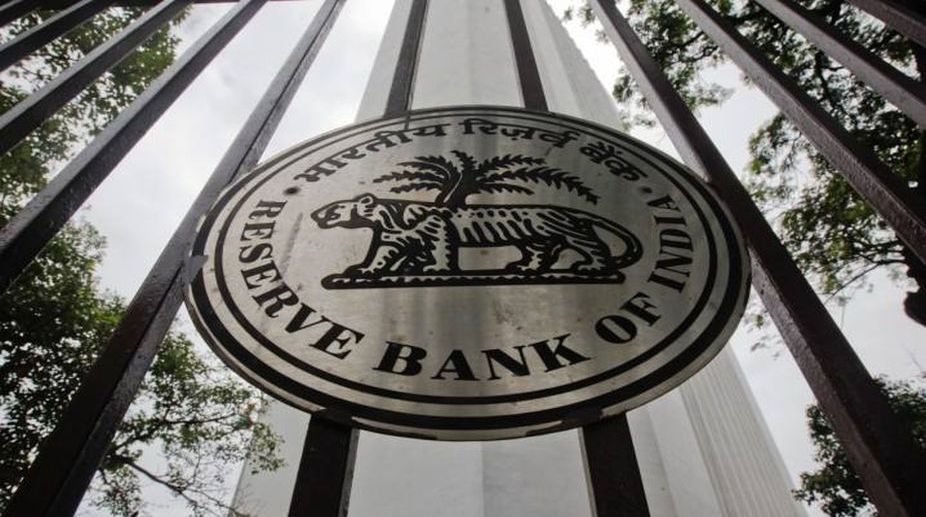Govt bonds worth Rs 32,000 crore to be auctioned on April 26
The Finance Ministry on Monday announced the sale of government bonds worth Rs 32,000 crore in two categories on April 26 (Friday).

Representational Image (Photo: Facebook/File)
Economic analysts were waiting for the decision of Monetary Policy Committee (MPC), which held its meeting on 6 and 7 February 2018. Its decisions were made public at 2.30 pm on 7 February. MPC decided to maintain status quo on the repo rate and reverse repo rate at 6 per cent and 5.75 per cent respectively. It was being speculated that these rates might be increased.
Repo rate is the rate of interest at which commercial banks borrow from Reserve Bank of India (RBI). In effect, banks’ cost of borrowing from RBI is determined by repo rate. On the other hand, the reverse repo rate is the rate of interest which banks earn on deposits with RBI. Therefore, we can say that if repo rate goes down the cost of funds for banks will go down and increase in repo rate will increase the cost of borrowing funds by banks from RBI.
Therefore, business people and industrialists will always want repo rate to decrease, so that their cost of borrowing, which is a significant part of their overall cost of production, is reduced. If interest rates go down household borrowers also gain, as EMI on home loans and consumer loans will also come down. Reduction in interest rates, not only promotes business activity but may also promote infrastructure growth, as the projects which are hitherto unviable may become viable with lower interest rates.
Advertisement
Economic analysts have feared an increase in repo rate due to continuously rising inflation in the last six months. In December it had reached 5.2 percent. Apart from this, slippage on fiscal consolidation front was also feared. After the introduction of GST, initially there was sufficient revenue collection; however, after rates were reduced, there was a sudden decline in GST receipts. As a result, we find that in the current fiscal year (2017-18), fiscal deficit increased to 3.5 per cent of GDP against the target of 3.2 per cent, the government had to raise loans from the market, which resulted in increase in bond yield from 6.9 per cent to more than 7.5 per cent. Rising international oil prices are also causing a huge worry for policymakers, which are raising inflation worries further. On the other hand, increase in interest rates by US’s Central Bank (Federal Reserve) has also been putting pressure on RBI to raise interest rates to stop the outflow of funds.
The Monetary Policy Committee stated that inflation rate has been rising for the last six months. Oil prices are also increasing unabated, and prices of many food items and also industrial products have been rising. In 2016-17, a 7.1 per cent GDP growth was recorded, which has now come down to nearly 6.1 per cent. Lower growth of exports vis-a-vis imports and resulting rising deficit in foreign trade is yet another cause of worry. Despite all these negative developments, better global growth outlook, especially in developed countries, a growth rate of Gross Value Added (GVA) may exceed 7.2 per cent in 2018-19.
Export growth outlook may also become better. As GST gets stabilised, the economy may also start looking upward. Today industrial outlook is positive after remaining subdued in the last few years. In this context rising Purchasing Managers Index, increase in steel and cement production, which indicates improved infrastructure development, especially road building and improvement in the services sector, all point to a better economic outlook.
The small-scale sector, which was already under pressure due to the implementation of GST, has been sought to be helped by the new monetary policy announcement. It is notable that small enterprises not only get a loan with great difficulty; they are also generally charged higher interest rate as compared to their counterparts in bigger enterprises. A new mechanism to determine interest rates, which was lingering since 2016, is being implemented now. MPC says that from now on banks will have to charge interest rate based on Marginal Cost of Funds Based Lending Rate (MCLR). Earlier the interest rate was charged on the basis of ‘base rate’.
It is notable that MCLR-based interest rates were supposed to be implemented from April 2016, but were adopted by banks. Since MCLR happens to be more than one percentage point lower than the base rate, it is expected that the cost of borrowing by small businesses will be reduced significantly. The shift to MCLR from base rate is also likely to benefit the home loan customers, as RBI has instructed the banks to charge a lower rate on old home loans also.
RBI’s expectations about future growth, inflation and fiscal outlook are not realised many times. But their decisions even after that don’t get affected and are trotted out the next time with different arguments, RBI tends to maintain its stance of withholding rate cut. This time it’s MPC, with wider participation and representation from the government as well.
Let us hope that the fears which have made MPC withhold a rate cut would be assessed in the next meeting of MPC and hopefully repo rate would be reduced, to boost growth, spur industrial and infrastructure development and provide relief to the middle class in EMI on their loans.
The writer is Associate Professor, PGDAV College, University of Delhi.
Advertisement